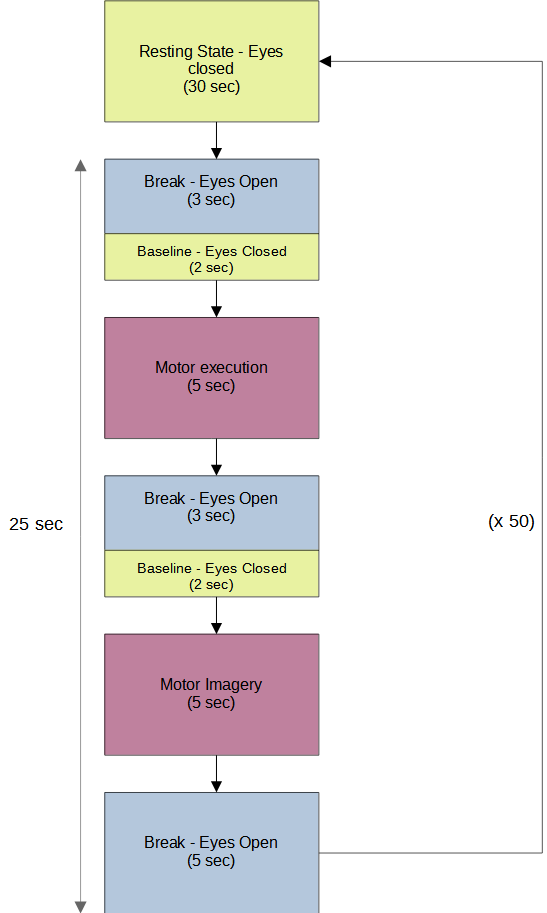This repository explores the development of a real-time Brain-Computer Interface (BCI) capable of classifying motor execution and motor imagery tasks using EEG signals. The ultimate goal is to create a rock-paper-scissors game controlled by BCI using minimal training data.
The project arose from a desire to compete with a colleague in various games using BCI technology. We aimed to develop a system that accurately classifies different limb movements using only 50 training samples per condition.
This study is divided into two parts:
Offline Analysis: This phase involves preprocessing and classification of recorded EEG signals to identify optimal algorithms for real-time processing.
Online Analysis: This phase implements the chosen algorithms in a real-time BCI system using MNE-lsl for online classification and control.
- Subjects: Two right-handed participants (me and my colleague).
- Tasks: Three motor execution (ME) and three motor imagery (MI) tasks, each focused on a different limb (left arm, right arm, right leg).
- Data Acquisition: 32-channel EEG system (TMSI) with 2064 Hz sampling rate using a standard 10/20 electrode montage.
- Protocol: Each session consisted of an initial resting state followed by 50 repetitions of a sequence combining ME tasks
(raising a limb then put it back to rest), a 5sec break, the MI tasks (imagining the ME task) and finally a 5sec break
before starting the next repetition.
The protocol is illustrated as a diagram below:
The raw EEG data undergoes various steps to remove artifacts and noise, including:
- Band-pass filtering (0.1 Hz - 50 Hz) with zero-phase response.
- Automatically detect bad channels based on peak-to-peak amplitude, deviation from the mean amplitude, correlation with others channels and power spectral density distribution.
- Epoching (-0.15s to 5s around each event-task).
- Re-referencing to the 'Cz' electrode.
- Reconstruction of bad channels by spherical spline interpolation [1].
- ICA for artifact rejection with automatic component labeling using MNE-ICALabel.
- Baseline correction.
- Automatic bad epoch rejection based on the power spectral density and the Riemannian covariance (using the Potato algorithm [2]).
(Details to be added)
(Details on chosen algorithms to be added).
(Results of offline classification - intra-subject & inter-subject - to be added).
(Details to be added)
(Details to be added)
(Details on chosen algorithms to be added).
(Results of offline classification - intra-subject & inter-subject - to be added).
Clone the repository and install the dependencies:
git clone https://github.com/nabilalibou/online_bci_mi.git
pip install -r requirements.txt
(To be added - demonstrate online preprocessing and classification)
[1] F. Perrin, J. Pernier, O. Bertrand, and J. F. Echallier, “Erratum: Spherical splines for scalp potential and current density mapping (Electroenceph. Clin. Neurophysiol. 1989, 72: 184 187),” vol. 76, Jan. 1990.
[2] The Riemannian Potato: an automatic and adaptive artifact detection method for online experiments using Riemannian geometry A. Barachant, A Andreev, and M. Congedo. TOBI Workshop lV, Jan 2013, Sion, Switzerland. pp.19-20.
